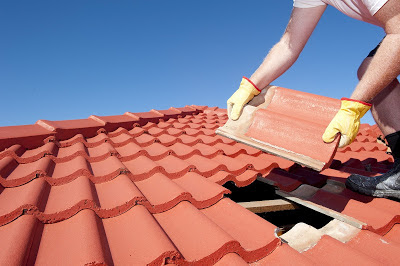Roofs are what keep us and our buildings safe and protected from the environment outside like Rain, snow& hail. To prevent your roof from getting damaged, you first must understand the various factors that can have it damaged. We are going to discuss damages & its prevention. A famous proverb says,
Performance is based on good design, quality materials, proper installation, and a preventive-maintenance program. Roof maintenance is critical to preventing roof problems and keeping the roof in a watertight condition. Early identification and repair of roof problems will help provide a long-lasting roof system.
Extending the life of your roof comes down to taking immediate action once you identify a problem. Keep an eye on your gutters, trees, snow, and debris and you’ll have prevented a slew of issues.
It is important that you or a professional inspect your roof at least annually (preferably twice, in both the fall and spring) to ensure that any damage unapparent from the ground or the untrained eye is tended to immediately.
If you don’t feel qualified or safe performing a thorough inspection, give us a call!
What is Roof System, & Why does it matter?
As we know, the Roof system is arguably the most vulnerable part of a building's exterior. Ultraviolet radiation, wind, rain, hail, snow, tornado, and sleet all affect a roof system's performance.Performance is based on good design, quality materials, proper installation, and a preventive-maintenance program. Roof maintenance is critical to preventing roof problems and keeping the roof in a watertight condition. Early identification and repair of roof problems will help provide a long-lasting roof system.
What Safety Measures Should We Take?
1. Regularly inspect your roof.
Each year, before Rain/Storm season, it’s important to thoroughly examine your roof. If you aren’t comfortable with getting onto your roof, call a professional who has the experience and equipment to inspect your roof meticulously and safely. If you choose to do it yourself, check for sagging, damaged or missing shingles, algae growth, insect/animal activity and leaking light or liquid in your attic. All of these are red flags for immediate repair by you or a professional.2. Fix ponding as soon as possible
Ponding happens when the roof is able to hold standing water. Typically, the roof should be able to shed water away immediately. Standing water is quite damaging to the material and might lead to leaks. Ponding is of particular concern to the roof that is pitched rather low, but it might also happen to a steeply pitched roof in some cases.3. Clean your gutters
Gutters carry off rainwater from the roof and direct it either into a separate rainwater tank or into the sewer. In either case, if a gutter is clogged, it can cause water to pool and eat away at the material. The most common reasons that a gutter might get clogged are because of debris, usually fallen leaves or bird's nest. Since gutters are curved inward to prevent water from spilling over, it can be difficult to determine if debris is clogging it. Only when rot is visible or when water pours over the gutter would it be evident that it is clogged.4. Trim your trees.
Some limbs can get too close for comfort. If part of a tree is almost touching or resting on your roof, that’s cause for major concern. During storms, limbs can swing several feet or fall due to high winds. If you don’t end up with a hole in your roof, you’ll probably lose a few shingles. Trimming your trees also discourages animals from getting into chimneys, walls, vents, etc.5. Check flashings integrity regularly
Flashings are flexible metals placed around joints or openings to prevent water from seeping through. Flashings are a common site for leaks as they are sometimes manipulated in different shapes to cover the joint or opening, occasionally punctured to be fixed in place.These places are around vents, chimneys, valleys, pipes, and skylights. Signs that flashings are damaged usually involve rusting or bending on the material.6. Inspect and repair seals, joints, and flashing
Seals, joints, and flashing are the most common places for leaks. Dried or loose sealant and punctures are signs of vulnerability. Don’t ignore them.Extending the life of your roof comes down to taking immediate action once you identify a problem. Keep an eye on your gutters, trees, snow, and debris and you’ll have prevented a slew of issues.
It is important that you or a professional inspect your roof at least annually (preferably twice, in both the fall and spring) to ensure that any damage unapparent from the ground or the untrained eye is tended to immediately.
If you don’t feel qualified or safe performing a thorough inspection, give us a call!




